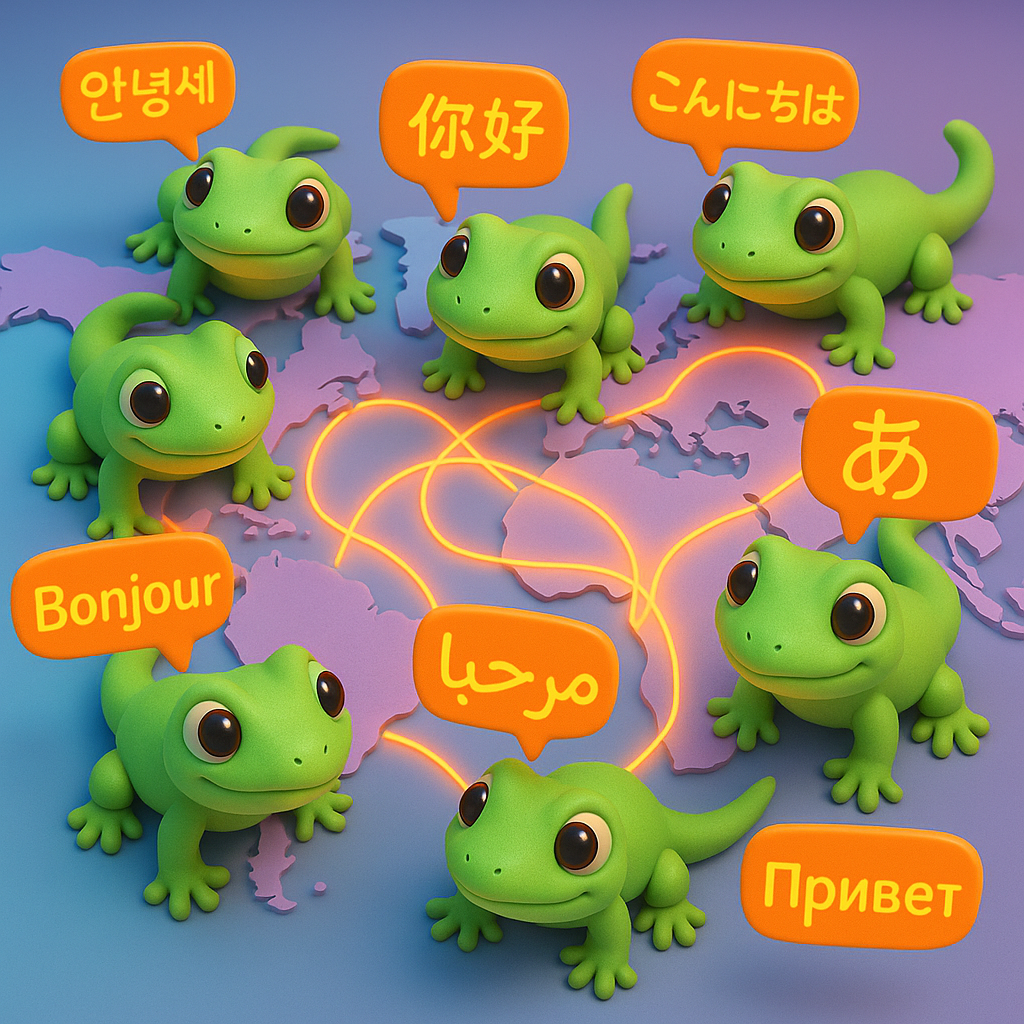LLMO Challenges Faced by Multinational Websites in Content Strategy
In the rapidly evolving landscape of search, multinational websites face unique challenges when optimizing for Large Language Models (LLMs). While traditional SEO focused on keyword placement and backlinks, LLMO (Large Language Model Optimization) requires a fundamentally different approach to ensure global content remains discoverable, relevant, and scalable across diverse markets.
Primary obstacles for multinational websites
Linguistic diversity challenges
Multinational websites must manage content across multiple languages while maintaining brand voice consistency. This challenge is magnified with LLMs, which process varied syntax, idioms, and regional dialects differently across markets. Training data biases often persist in LLMs, creating potential misalignment with local cultural norms and linguistic preferences.

As large language model optimization research shows, generative AI-driven traffic increased 1,200% between mid-2024 and early 2025, making multilingual LLMO strategies essential for global visibility. The exponential growth demonstrates how quickly AI is transforming the search landscape, requiring multinational brands to adapt their content strategies rapidly or risk losing significant visibility.
Technical scalability issues
Implementing LLMO across multiple regions presents significant technical hurdles:
- High compute costs for training region-specific LLM implementations
- Integration challenges between AI tools and existing CMS across global sites
- Performance optimization needs across varied hosting environments
- Data synchronization between regional content repositories
Consider a global retail brand operating in 40 countries - each with its own CMS instance, analytics setup, and technical team. Implementing consistent LLMO approaches across all markets requires both technological standardization and flexible adaptation to regional infrastructure constraints.
These scalability challenges often require significant infrastructure investment, with tools for monitoring LLMO performance becoming essential for managing this complexity. Without proper monitoring, multinational brands struggle to identify which markets are underperforming in LLM visibility and why specific content isn’t gaining traction across regions.
Content localization complexity
Beyond simple translation, effective LLMO requires deep localization:
- Balancing hreflang implementation with regional SEO standards
- Adapting content to regional search behaviors without diluting core messaging
- Managing schema markup consistency across multilingual sites
- Addressing regional compliance requirements (GDPR, CCPA, etc.)
For example, a finance company might create content about “retirement planning” that performs well in the US market, but requires substantial adaptation for European markets where pension systems and regulatory environments differ dramatically. The content must satisfy both regional expectations and still maintain core brand positioning.
According to ContentGecko research, 59.8% of marketers worry about losing brand distinctiveness through AI content scaling, making balanced localization approaches critical. This concern highlights the tension between scaling efficiency and maintaining the unique voice that makes a brand recognizable across diverse markets.
Implementation strategies for global LLMO success
Multilingual content adaptation
Successful multinational websites leverage specialized LLM architectures:
- Implement pre-trained models (e.g., Mixture of Experts/MoT architectures) for handling domain-specific linguistic variations
- Train LLMs on “brand voice training sets” comprised of high-performing regional content
- Develop region-specific prompt libraries that maintain brand consistency while addressing local nuances
For instance, a luxury hospitality brand might create a core “brand voice dataset” from its most successful content, then fine-tune regional variations that incorporate local cultural references and hospitality terminology while maintaining the sophisticated tone of the parent brand.
Transfer learning with advanced models like Qwen2.5 Max can cut localization costs by up to 70% for multilingual marketing initiatives, according to ROI of LLM optimization research. This cost efficiency comes from not having to build separate models from scratch for each market, instead leveraging pre-trained knowledge and adapting it to regional requirements.
Structured data implementation
Schema markup becomes even more critical for multinational LLMO:

- Implement schema.org tags consistently across all regional sites
- Use JSON-LD to enhance LLM comprehension of content hierarchy
- Apply multilingual structured data to clarify content relationships
- Prioritize factual markup to improve LLM citation probability
For example, an e-commerce company selling in multiple countries would implement product schema that clearly identifies localized attributes (pricing, availability, shipping options) while maintaining consistent core product information. This structured approach helps LLMs understand both the universal product features and the market-specific variations.
These structured data approaches significantly enhance how LLMs interpret content intent across languages, improving both traditional search and AI-driven discoverability. When an LLM can confidently understand the relationship between entities in your content, it’s more likely to cite your page as an authoritative source.
Cross-regional SEO alignment
Balancing traditional SEO with LLMO requires strategic alignment:
- Standardize keyword clustering approaches across markets
- Ensure Core Web Vitals optimization (LCP <2.5s, CLS <0.1) across all regional sites
- Develop consistent content templates that work for both traditional and LLM search
- Implement unified analytics for tracking both traditional metrics and LLM visibility
A global technology company might develop a universal content template for product pages that includes sections optimized for traditional search (feature lists, specifications) alongside narrative-focused content that answers common user questions—content formats that LLMs are more likely to reference.
This hybrid approach, as detailed in comparing traditional SEO vs LLMO techniques, ensures multinational sites maintain visibility in both paradigms. The most successful global brands aren’t abandoning traditional SEO—they’re integrating LLMO approaches alongside proven techniques to maximize visibility across all search channels.
Solutions for global content discoverability
Performance optimization
Global LLMO requires rigorous performance optimization:
- Compress images and implement next-gen formats
- Lazy-load non-critical assets across regional sites
- Reserve space for dynamic content to minimize layout shifts
- Implement lightweight LLM implementations (quantized models) to reduce latency
Consider a media company operating news sites across multiple continents. By implementing consistent performance optimization standards—such as automatically serving appropriately-sized images based on device and connection speed—they ensure users in markets with varying internet infrastructure all receive acceptable page load times.
Websites with poor Core Web Vitals face significant ranking penalties in both traditional and LLM-powered search experiences. The correlation between page experience metrics and search visibility continues to strengthen as search engines prioritize user experience factors in their algorithms.
Regional hreflang implementation
Proper regional targeting remains essential:
<link rel="alternate" hreflang="en-us" href="https://example.com/en-us/page" /><link rel="alternate" hreflang="es-mx" href="https://example.com/es-mx/page" />This implementation helps avoid duplicate content penalties while directing LLMs to the appropriate regional version for citations and answers. When implemented correctly, hreflang tags allow search engines and LLMs to understand the relationship between similar content targeting different markets.
For multinational companies, the consistency of hreflang implementation across potentially dozens of regional variations becomes a significant technical challenge, often requiring automated solutions to ensure all cross-references remain accurate as content evolves.
AI-driven personalization
Deploy real-time optimization tools:
- Implement region-specific content recommendation engines
- Utilize LLMs with live data integration capabilities for dynamic localization
- Apply user behavior tracking to refine regional content strategies
A global SaaS company might implement an AI-driven content recommendation system that analyzes user behavior by region, then dynamically adjusts content emphasis based on the features and use cases most relevant to each market. This creates a more relevant experience while providing valuable data for optimizing future content.
These personalization approaches create more relevant experiences for users while improving LLM comprehension of regional content variations. By capturing and analyzing how users from different regions interact with content, organizations can continuously refine their understanding of regional preferences.
Brand consistency and compliance considerations
Brand voice preservation
Maintaining consistent brand identity across regions requires:
- Developing clear task parameters during LLM fine-tuning
- Creating brand voice training datasets from high-performing regional content
- Implementing oversight mechanisms to ensure AI-generated content maintains brand standards
A global cosmetics brand might develop a comprehensive brand voice guidelines document specifically for LLM training, including examples of preferred terminology, tone, and cultural references that should be maintained or avoided across markets. This document becomes the foundation for both human and AI content creation.
As LLM search becomes more prevalent, maintaining a coherent brand voice across languages becomes increasingly challenging yet essential. The risk of brand dilution increases when scaling content across multiple markets, requiring systematic approaches to voice preservation.
Regulatory compliance management
Multinational websites must navigate complex regulatory landscapes:
- Implement AI fact-checking protocols to verify compliance with local legal standards
- Audit training data for cultural biases that could create compliance issues
- Develop region-specific compliance guardrails for LLM-generated content
- Create governance frameworks for ensuring global content meets varied regional requirements
For example, a financial services company operating in both the EU and Asia must implement different compliance protocols for content about investment products. In the EU, GDPR and MiFID II regulations require specific disclosures, while Asian markets may have different requirements around risk disclosure and promotional language.
The complexity increases when using AI to scale content production, as regulatory requirements must be encoded into the content generation process rather than addressed through manual review alone.
Practical implementation approach
For marketing leaders looking to implement effective LLMO strategies across multinational websites, consider this phased approach:
- Audit current performance: Evaluate traditional SEO metrics alongside emerging LLM visibility metrics across regions
- Standardize technical foundations: Ensure consistent schema implementation, Core Web Vitals optimization, and proper hreflang setup
- Develop regional content strategies: Create region-specific content plans that balance global brand voice with local relevance
- Implement monitoring systems: Deploy tools to track both traditional SEO and LLMO performance metrics
- Establish governance frameworks: Create clear processes for maintaining brand consistency and compliance across markets
An effective audit might reveal that while your German content performs well in traditional search, it rarely appears in LLM citations. Investigation might show that your German content lacks the narrative structure and comprehensive answering format that LLMs prefer when selecting sources—a specific issue that can be addressed in your content strategy.
Tools like ContentGecko can significantly accelerate this process through AI-powered content generation and optimization that maintains quality while scaling across markets. Their free keyword grouping tool can help identify regional keyword variations, while their content writer generator streamlines multilingual content production.
By implementing a systematic approach to global LLMO, multinational organizations can maintain visibility in both traditional and AI-powered search while preserving the regional relevance that makes their content valuable to diverse audiences.
TL;DR
Multinational websites face significant LLMO challenges including linguistic diversity, technical scalability, and localization complexity. Successful global strategies require structured data implementation, performance optimization, and balanced approaches to brand consistency. By implementing multilingual content adaptation and cross-regional SEO alignment, marketing leaders can improve global content discoverability while maintaining brand integrity across markets. The key is developing systems that scale effectively while preserving the unique qualities that make regional content valuable to both users and Large Language Models.
